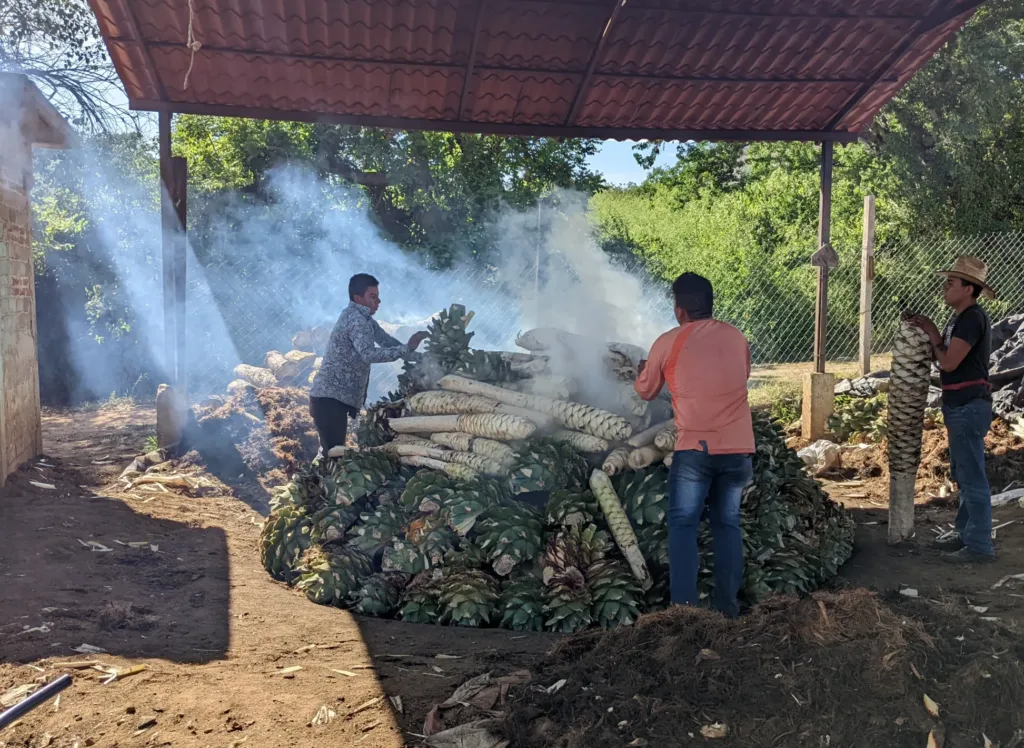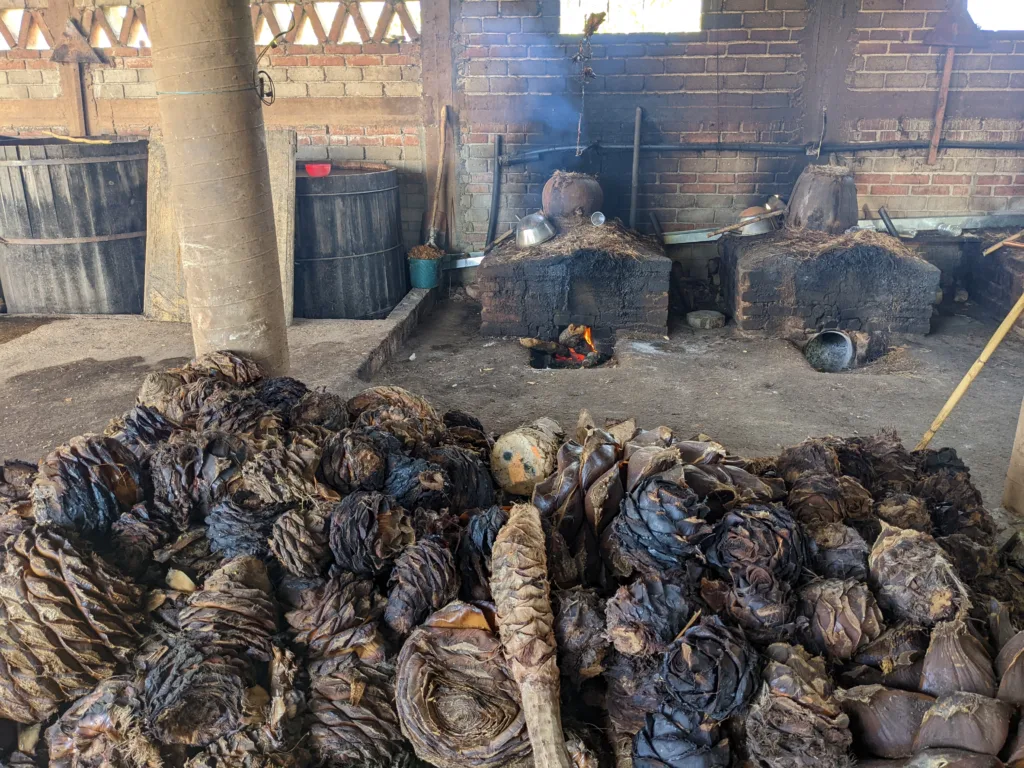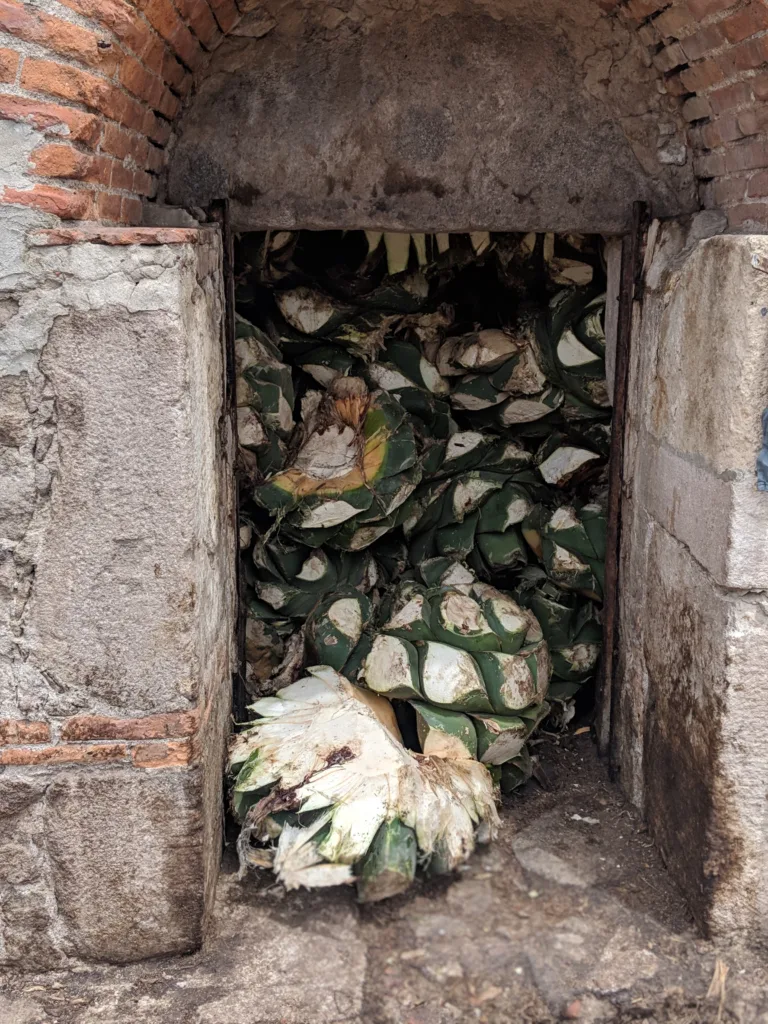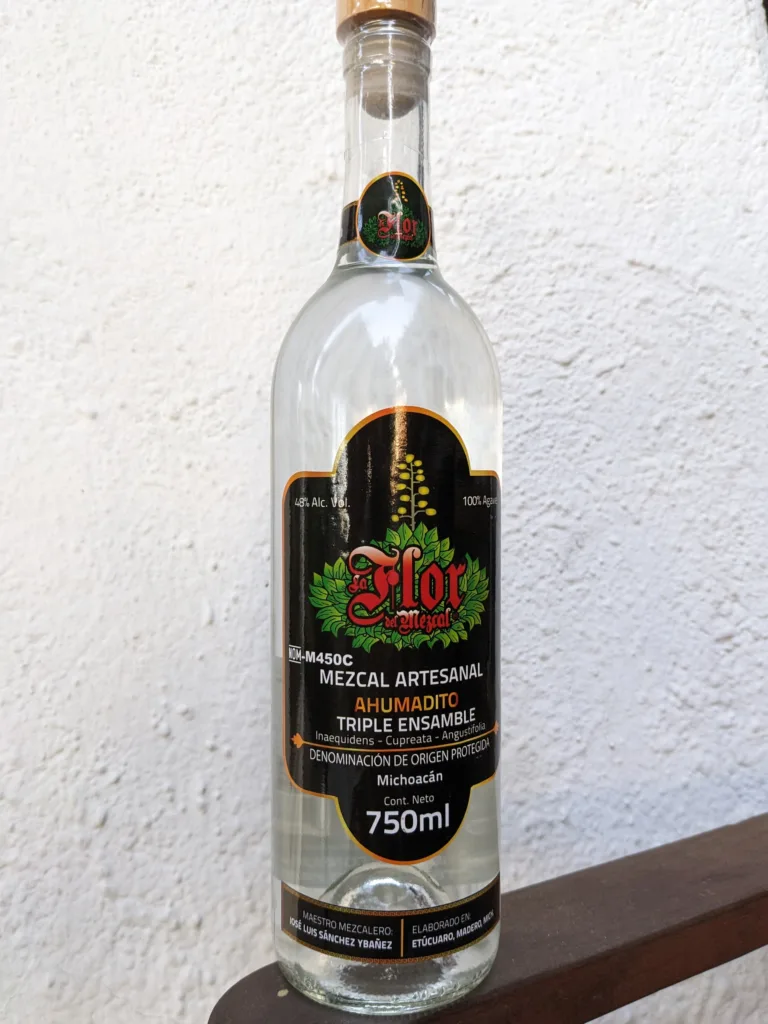Yes some mezcal is smoky, but not as much as a peated Scotch. The truth behind the smoke and where to find smoky and non-smokey mezcal.
Mezcal seems to almost constantly be referred to as “tequila’s smokey cousin” or something similar. For drinkers new to mezcal this description can lead you astray. If you’re not a fan of peaty Scotch whisky you might be turned off even trying mezcal. On the other hand if you’re expecting mezcal to match up to the smokiness of a Lagavulin or Ardbeg you might be let down.
Mezcal for those not interested in smoke
Don’t be put off! The great thing about mezcals is that they are multi-dimensional. There’s not just one spectrum of flavor. The dozens of species of agave and artisanal production techniques bring many facets of flavor which can work with any smokiness, or even leave it behind completely. Swearing off all mezcal because you didn’t enjoy a smoky version is like swearing off all cheese because you don’t like stinky blue Roquefort.
I’ve listed a few types below which have zero smoke. However agave has a distinctive character, and just like with cheese, it’s easier to develop an appreciation by starting with more subtle varieties.
Mezcal for those coming from peated Scotch
The process for producing peated Scotch involves literal smoking, where the barley is heated at relatively low temperatures over peat smoke. In the mezcal process, agave hearts are cooked in underground ovens over rocks made hot from burning wood underneath. There is a reasonable level of smoke at first, but once the agave is all covered and buried, the smoke drops right off along with the oxygen.
A truly peaty Scotch, like a Lagavulin 16 or something from Laphroaig is a lot smokier than the smokiest mezcals. This is because of the respective methods of production. Think of peated Scotch being like smoked meat, and mezcal more like meat cooked over a wood fired grill.
I’ve listed some of the smokier mezcals below, but if you’re a big Islay Scotch drinker, it would make sense to temper your expectations.
Table of Contents

Why is mezcal smoky?
Many mezcals have a smokiness that comes from the production process, where the agave is cooked in an underground pit over hot rocks heated by wood fire. The wood smoke contains flavor compounds, such as syringol and guaiacol, which stay through fermentation and distillation.
Some mezcal, and almost all tequila, is produced by steam heating the agave instead, so that smoke never comes in contact. Mezcal produced this way will not have the same smokey notes.
Aside from the wood smoke, another process called Maillard reaction, can add roasted, coffee or burnt flavors. Maillard reactions are also responsible for the browning of the agave. This process is caused simply by heat, so even when the agave is steamed there may be some smoke-like flavors.
Aged mezcal is not nearly so common as aged tequila, but if mezcal is kept in freshly charred oak barrels this may also add some toastyness to the flavor.

Is all mezcal smoky?
No, only mezcal that has been made using wood pit ovens is smoky, however this is the large majority of mezcals. Some mezcal is made using steam ovens, like most tequila, so without the smoke contact it doesn’t have the same smokiness.
Mezcal from the states of San Luis Potosí and Guanajuato is traditionally made by steaming the agave piñas before fermenting. These mezcals don’t have a lot of smokiness if any. The major agave produced in these stakes is agave salmiana. Decades ago, San Luis Potosí was the largest producer of mezcal and salmiana, the most common variety.
Within the wide range of mezcal you will also find a range of smokiness. In some mezcals the smoke is more dominant, in others barely detectable. This can be due to a range of factors, especially the time, heat and quantity of pinas used in the cooking process. Where some mezcaleros might cook the piñas for a full seven or more days, others may stop the process after just three days.

Is there any smoky tequila?
There is! But just as almost all mezcal is wood baked and smoky, almost all tequila is steamed. The tequila that you can find that is made with pit ovens is very expensive. For example:
- Patrón released a special addition Gran Patrón Smoky tequila, that goes for around $220.
- There is a pit oven cooked Siembra Valles Ancestral edition that costs about $125.
- Cenote Ahumado is a wood-fired tequila released in February 2023 that retails for $76
An alternative is to go for mezcal made with blue agave, (also known as blue Weber or agave tequilana), the same agave used to make tequila. Derrumbes Zacatecas is a mezcal from blue agave that is pit roasted in the state of Zacatecas, near the border with Jalisco. This bottle only costs around $55. If the same spirit was made just two miles west in Jalisco, the same way, it would be called tequila.
Most smoky mezcal?
With literally thousands of producers of mezcal it’s impossible to declare the smokiest, but here are some options for the Islay lovers out there. Most of these are higher proof, and you’ll see that with intensity of alcohol comes intensity of flavor and smokiness.
- Del Maguey Chichicapa, Espadin, 48% ABV ($70-$80) – one of the more widely available mezcals from the brand who spearheaded mezcal marketing in the US. It may be because of expressions like the Chichicapa that mezcal has such a smoky reputation. Its stablemate, Vida ($35-$40, 42% ABV), is even more widely available but with slightly less smoke.
- Montelobos Espadin, 42.3% ABV (~$45) – another widely available and relatively affordable, medium smoky mezcal.
- Marca Negra, Espadin, ~50% ABV ($60-$70) – all of Marca Negra’s mezcal line up are higher proof. They are made as the mezcalero likes to drink them, not targeting imagined consumer tastes. The espadin in particular has a stronger smoky profile.
- Fidencio Clasico, Espadin, 45%-50% ABV (~$40) This relatively affordable espadin from Oaxaca is super smoky and at a higher proof than other mezcals in this price range.
- La Flor del Mezcal, Triple Ensamble Ahumadito, 48% ABV ($45 in Mexico) – good luck getting your hands on a bottle outside of Michoacan. This ensemble of agaves cupreata, espadin and inaequidens is made selecting the piñas that were most toasted during the baking process. Ahumadito translates to smoked and that is certainly the case here.

Least smoky mezcal?
The least smoky mezcals tend to come from the states of San Luis Potosí and Guanajuato where traditionally mezcal is made by steaming the piñas rather than cooking them in pit ovens. All mezcal will have the state of production labeled so look out for these states.
Be aware that along with regional traditions in production the dominant agave variety is different too. In San Luis Potosi and Guanajuato, most mezcal is made from agave salmiana, a huge, low yielding agave that has its own flavor profile which can be love it or hate it. If you like herbal “green” flavors, green bell pepper and jalapeño this might be for you.
Also look for mezcal bottled at lower proofs, close to 40% alcohol by volume. While this is no guarantee of a low smoke mezcal, the intensity of flavors overall will be lower. What would count as a high proof tequila is just middle of the road for mezcal, with many mezcals bottled at between 45% and 50% ABV.
Here are some examples of mezcals to try with little to no smokiness:
- Fidencio Unico, Espadin, ~46% ABV ($40-$45) – a rare expression from Oaxaca that does not use underground wood roasting. Made from the same agave, by the same mezcalero as the smoky Fidencio Clasico.
- Mina Real Mezcal Blanco, Espadin, 46% ABV ($40) – this is another example from Oaxaca that steam roasts the agave. Distillation for the Mina Real takes place in clay pots, which is more often associated with ancestral mezcal. A great bang for buck, non-smoky mezcal. Also comes in a reposado version, aged for four months.
- Derrumbes San Luis Potosí, Salmiana, 43% ABV (~$45) – cooked in clay ovens, very “green” and jalapeño peppery tasting.
- Leyendas Verde, San Luis Potosí, Salmiana, 42%, ($50-$70) – cooked in clay ovens, this agave salmiana has no smokiness but instead you should expect jalapeno spiciness.
Is mezcal peaty?
Peat is not used to cook agave so it wouldn’t technically be called “peaty”, but it often has the same smoky character as certain Scotch whisky that is produced using peat smoke. In drinking circles, if you do refer to your mezcal as peaty, most will follow what you mean.
How do peated whisky and mezcal production compare?
Both the mezcal and whisky making processes use heat to prepare the ingredients for fermentation. In the case of whisky, germinated grains (normally barley) are dried in a kiln in a process called malting. In some cases dried peat is used as fuel in the kiln. For mezcal, the agave cores, or piñas, are baked to convert their carbohydrates to fermentable sugars. In many cases wood coals are used as the heat source and the piñas are cooked over days in underground ovens.
What does peaty mean?
The terms “peaty” or “peated” originally relate to Scotch whisky. In some parts of Scotland, particularly Isaly, dried peat is used to smoke malting barley. The barley is fermented, distilled, then aged to become whisky. The flavor compounds in the smoke are retained in the finished spirit. Whisky that has a lot of these compounds is described as peaty.
Peat itself is organic matter that has partly decayed in a swamp or bog. Given enough time peat becomes coal. Peat is abundant in parts of Scotland so is traditionally used to burn for heating, or in this case in the whisky making process.
If mezcal doesn’t use peat what does it use?
Mexico does not have large quantities of peat, so mezcal producers use wood sources instead. The wood used depends on what is available near the production site. In Oaxaca, this may be wood from pine, oak or pepper trees. Each wood source has its own smoke profile. Further north mesquite and cyprus are more common. Different batches from the same producer may use a different wood or different proportions, so the level or character of the smokiness may vary.
Smoky mezcal cocktails
Many cocktails using mezcal rely on its smokiness to balance the flavors of the drink. There are modern classics such as Illegal and Naked and Famous, as well as common substitutions like mezcal margarita and mezcal negroni. If you’re looking to make a cocktail that depends on the characteristic smokiness, it’s best to steer clear of mezcal from San Luis Potosí or Guanajuato which are less likely to be smoky. But if you’re up for experimentation, go ahead!
If you want to try a mezcal cocktail but are put off by the smokiness, try using half tequila and half mezcal. This can dial down the smokiness but still retain the agave character.
